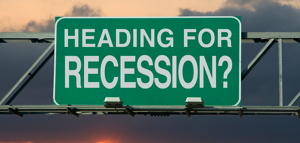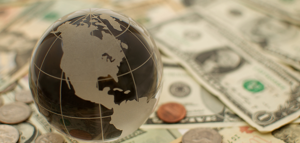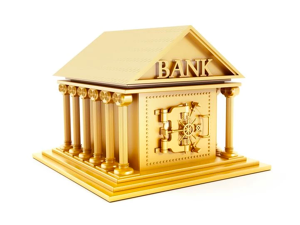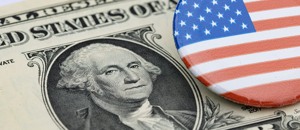Tavex uses cookies to ensure website functionality and improve your user experience. Collecting data from cookies helps us provide the best experience for you, keeps your account secure and allows us to personalise advert content. You can find out more in our cookie policy.
Please select what cookies you allow us to use
Cookies are small files of letters and digits downloaded and saved on your computer or another device (for instance, a mobile phone, a tablet) and saved in your browser while you visit a website. They can be used to track the pages you visit on the website, save the information you enter or remember your preferences such as language settings as long as you’re browsing the website.
| Cookie name | Cookie description | Cookie duration |
|---|---|---|
| tavex_cookie_consent | Stores cookie consent options selected | 60 weeks |
| tavex_customer | Tavex customer ID | 30 days |
| wp-wpml_current_language | Stores selected language | 1 day |
| AWSALB | AWS ALB sticky session cookie | 6 days |
| AWSALBCORS | AWS ALB sticky session cookie | 6 days |
| NO_CACHE | Used to disable page caching | 1 day |
| PHPSESSID | Identifier for PHP session | Session |
| latest_news | Helps to keep notifications relevant by storing the latest news shown | 29 days |
| latest_news_flash | Helps to keep notifications relevant by storing the latest news shown | 29 days |
| tavex_recently_viewed_products | List of recently viewed products | 1 day |
| tavex_compare_amount | Number of items in product comparison view | 1 day |
| Cookie name | Cookie description | Cookie duration |
|---|---|---|
| chart-widget-tab-*-*-* | Remembers last chart options (i.e currency, time period, etc) | 29 days |
| archive_layout | Stores selected product layout on category pages | 1 day |
| Cookie name | Cookie description | Cookie duration |
|---|---|---|
| cartstack.com-* | Used for tracking abandoned shopping carts | 1 year |
| _omappvp | Used by OptinMonster for determining new vs. returning visitors. Expires in 11 years | 11 years |
| _omappvs | Used by OptinMonster for determining when a new visitor becomes a returning visitor | Session |
| om* | Used by OptinMonster to track interactions with campaigns | Persistent |
| Cookie name | Cookie description | Cookie duration |
|---|---|---|
| _ga | Used to distinguish users | 2 years |
| _gid | Used to distinguish users | 24 hours |
| _ga_* | Used to persist session state | 2 years |
| _gac_* | Contains campaign related information | 90 days |
| _gat_gtag_* | Used to throttle request rate | 1 minute |
| _fbc | Facebook advertisement cookie | 2 years |
| _fbp | Facebook cookie for distinguishing unique users | 2 years |

The Federal Reserve, often referred to as “the Fed,” is the central bank of the United States, a pivotal institution in the global financial ecosystem. Established by Congress in 1913 following a series of financial panics, its primary mission is to provide the nation with a safer, more flexible, and more stable monetary and financial system.
This article will explore the assumptions for the upcoming Fed meeting in march, the essence of the Federal Reserve, exploring its history, structure, functions, and its significant impact on both the American and global economies.
The Upcoming Fed Meeting in March 2024
There are some recent expectations surrounding the U.S. Federal Reserve’s interest rate policies in the near future. These include emphasising that the financial markets anticipate the Fed to maintain steady rates at its next meeting on March 20th 2024, continuing its recent trend of not adjusting interest rates.
The last increase in rates was in July 2023, but markets are predicting rate cuts as early as May 2024, with a consensus around three to four cuts by the end of 2024, potentially bringing short-term rates to just over 4%.
In the upcoming March meeting, the Fed will update its economic projections, including those for interest rates, which markets will closely watch
January’s meeting minutes indicated that the Fed believes the current policy rate is at its peak for this tightening cycle, suggesting potential rate reductions in the medium term. However, the Fed also expressed caution, indicating it would wait for more assurance that inflation is steadily moving towards its 2% target before considering rate cuts.
Recent economic data show inflation has decreased from its peak but remains above the Fed’s 2% target, with the Personal Consumption Expenditures price index reporting a 2.4% annual inflation rate for the year to January 2024, and a 2.8% rate excluding food and energy. Similarly, the Consumer Price Index suggests annual inflation at 3.1%, or 3.9% excluding food and energy costs. Upcoming economic reports, including the CPI update and the Employment Situation Report for February, will provide critical data ahead of The Fed’s March meeting.
While the market does not anticipate an interest rate change in March, there is significant speculation about the timing and extent of expected rate cuts in 2024, with the Fed’s forthcoming updates and economic projections being key factors that will clarify these expectations.
History of the Federal Reserve

The start of the Federal Reserve was a response to the need for central control in banking to avert financial crises. Before its establishment, the U.S. was plagued by financial instability, including bank failures and economic recessions.
The Federal Reserve Act of 1913 marked the beginning of a new era in American banking and finance, setting the stage for over a century of monetary policy and financial regulation
The Structure of the Federal Reserve

The Federal Reserve’s structure is both complex and unique, designed to balance the central authority with regional interests.
- Board of Governors: Located in Washington, D.C., the members of the board oversees the Federal Reserve System, setting reserve requirements and supervising the operations of the Federal Reserve Banks.
- Federal Reserve Banks: There are twelve regional Federal Reserve Banks, each serving a specific geographic area of the U.S. For example, the bank of New York. They carry out the Fed’s monetary policy, supervise and regulate banks, and provide financial services.
- Federal Open Market Committee (FOMC): This committee makes key decisions regarding interest rates and the growth of the United States money supply.
Functions of the Federal Reserve

- Monetary Policy: The Fed controls monetary policy by managing interest rates and regulating the money supply to achieve macroeconomic objectives like maximum employment, stable prices for goods and services, and moderate long-term interest rates.
- Financial System Stability: It monitors and analyses global financial conditions to ensure stability within the financial system.
- Banking and Financial Services: The Fed serves as a banker for the U.S. government and provides payment services to financial institutions.
- Consumer Protection and Community Affairs: It enforces consumer protection laws and works to ensure access to safe, affordable banking and financial services.
How the Federal Reserve Impacts the Economy
The Federal Reserve has a significant impact on the economy through its control over interest rates, which influences consumer spending, inflation, and employment rates.
- Interest Rate Policy: By adjusting the federal funds rate, the Fed influences borrowing costs, investment, and overall economic activity.
- Inflation Control: The Fed aims to maintain inflation at a rate that is conducive to a healthy economy, using tools like open market operations to influence the money supply.
- Employment Rates: Through its monetary policy, the Fed seeks to achieve maximum employment, monitoring various indicators to guide its policy decisions.
Criticism and Controversies
The Federal Reserve has faced criticism and controversy, particularly regarding its independence, the transparency of its operations, and its decisions on monetary policy. Critics argue that its actions can sometimes exacerbate economic inequalities in the public and private sector and that it operates with insufficient oversight.
The Federal Reserve and Global Economy

As the central banking system of the world’s largest economy, the Federal Reserve plays a crucial role in the global financial system and bank reserves. Its policies can have wide-ranging effects beyond U.S. borders, influencing exchange rates, investment flows, and global economic stability.
Future Challenges for the Federal Reserve
The Federal Reserve board faces numerous challenges, including navigating the post-pandemic economic recovery, addressing technological changes in banking, and managing the risks associated with climate change and financial stability.
Conclusion
The Federal Reserve is a cornerstone of the U.S. financial system, with wide-ranging responsibilities and significant influence over the economy.
Understanding its role and functions is essential for anyone interested in the economic health and financial stability of the United States and the world at large.
As we look to the future, the Fed’s ability to adapt to evolving challenges will be critical in maintaining economic stability and fostering sustainable growth.
FAQs
1) What is the Federal Open Market Committee (FOMC)?
The FOMC is a committee within the Federal Reserve that makes key decisions about interest rates and the growth of the United States money supply.
2) What countries have the most gold reserves?
Holding gold is essential for countries and maintaining their financial stability among fluctuating interest rates. Read more here about what the top 7 countries with the largest gold reserves are.


















